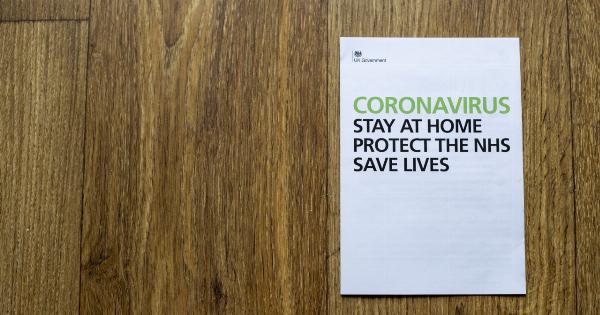Waist pain can be caused by a variety of factors, ranging from muscle strains to more serious underlying conditions.
Understanding the potential causes of waist pain can help determine when it is necessary to see a doctor for further evaluation and treatment.
Common Causes of Waist Pain
1. Muscle strains and sprains:.
These are common causes of waist pain, typically occurring due to sudden movements, overexertion, or lifting heavy objects improperly. Muscle strains and sprains can result in localized pain and stiffness in the waist area.
2. Herniated disc:.
A herniated disc occurs when the cushion-like discs between the vertebrae in the spine bulge or rupture, pressing on nearby nerves. This can lead to waist pain, along with symptoms such as numbness, tingling, and weakness in the legs.
3. Arthritis:.
Arthritis is a condition characterized by inflammation of the joints. It can affect the waist area, causing chronic pain, stiffness, and limited range of motion.
4. Kidney stones:.
When kidney stones form and pass through the urinary tract, they can cause intense pain in the lower back and waist region. This pain may come in waves and can be accompanied by other symptoms such as blood in the urine and frequent urination.
5. Sciatica:.
Sciatica occurs when the sciatic nerve, which runs from the lower back through the buttocks and down the legs, becomes compressed or irritated. This can result in radiating waist pain, along with pain, numbness, and tingling in the legs.
6. Scoliosis:.
Scoliosis is a condition characterized by an abnormal curvature of the spine. Depending on the severity of the curvature, it can cause waist pain and discomfort.
7. Endometriosis:.
Endometriosis is a condition where tissue similar to the lining of the uterus grows outside of the uterus. This tissue can cause pain in the waist area, especially during menstruation.
8. Digestive issues:.
Problems with the digestive system, such as gas, bloating, constipation, or irritable bowel syndrome (IBS), can cause waist pain. These conditions may also be accompanied by other gastrointestinal symptoms.
9. Pelvic inflammatory disease (PID):.
PID is an infection of the female reproductive organs, typically caused by sexually transmitted bacteria. It can cause waist pain, along with pelvic pain, abnormal vaginal discharge, and fever.
10. Spinal stenosis:.
Spinal stenosis occurs when the spaces within the spine narrow, putting pressure on the spinal cord and nerves. This can lead to waist pain, as well as symptoms like weakness, numbness, and difficulty walking.
When to See a Doctor for Waist Pain
While occasional waist pain may be manageable with rest and self-care measures, there are certain signs and symptoms that should prompt seeking medical attention:.
1. Severe or worsening pain:.
If the pain becomes severe, persists, or worsens over time, it may signify an underlying condition that requires medical intervention.
2. Numbness or weakness:.
If waist pain is accompanied by numbness or weakness in the legs, it could indicate nerve compression or other serious problems that should be evaluated by a healthcare professional.
3. Urinary or bowel changes:.
If waist pain is accompanied by urinary or bowel changes, such as difficulty urinating, blood in the urine, or bowel incontinence, it may suggest a more urgent issue that requires immediate medical attention.
4. Traumatic injury:.
If the waist pain is the result of a traumatic injury, such as a fall or car accident, it is important to seek medical evaluation to rule out any fractures, dislocations, or internal injuries.
5. Fever and abdominal tenderness:.
If waist pain is accompanied by fever, abdominal tenderness, or other signs of infection or inflammation, it may indicate a more serious condition that requires medical treatment.
Diagnosing and Treating Waist Pain
When seeing a doctor for waist pain, they will typically perform a thorough evaluation, which may include:.
1. Medical history:.
The doctor will ask about the duration and nature of the waist pain, as well as any associated symptoms or previous injuries.
2. Physical examination:.
The doctor may palpate the waist area to identify any areas of tenderness or swelling. They may also examine the spine and perform certain movements to assess range of motion and muscular strength.
3. Diagnostic tests:.
Depending on the suspected cause of the waist pain, the doctor may order further diagnostic tests.
These may include imaging studies such as X-rays, CT scans, or MRI scans, which can provide detailed images of the bones, muscles, and organs in the waist area. Blood or urine tests may also be performed to check for signs of infection, inflammation, or other systemic conditions.
The treatment for waist pain will depend on the underlying cause. It may involve:.
1. Rest and self-care:.
In cases of mild or acute waist pain, rest and self-care measures such as applying heat or cold packs, taking over-the-counter pain relievers, and gentle stretching exercises may help alleviate symptoms.
2. Physical therapy:.
If the waist pain is due to muscular imbalances, weakness, or poor posture, a physical therapist can help develop a customized exercise and stretching program to address these issues and improve overall strength and flexibility.
3. Medications:.
If the waist pain is caused by inflammation, nonsteroidal anti-inflammatory drugs (NSAIDs) may be recommended to reduce pain and swelling. In certain cases, muscle relaxants or other pain medications may be prescribed.
4. Injection therapies:.
In some situations, corticosteroid injections or nerve blocks may be administered to reduce inflammation and provide temporary pain relief.
5. Surgical intervention:.
If conservative treatments fail to provide relief or if the waist pain is caused by a condition that requires surgical intervention (such as herniated disc or spinal stenosis), surgery may be considered as a last resort.
Preventing Waist Pain
While waist pain cannot always be prevented, there are certain measures that can reduce the risk of experiencing it:.
1. Practice good posture:.
Maintaining proper posture while sitting, standing, and lifting can help prevent unnecessary strain on the waist and lower back.
2. Exercise regularly:.
Engaging in regular physical activity, such as strength training and aerobic exercises, can help strengthen the muscles that support the waist and improve overall flexibility.
3. Lift objects correctly:.
When lifting heavy objects, it is important to use proper lifting techniques, such as bending at the knees and lifting with the legs rather than the back.
4. Maintain a healthy weight:.
Excess weight can put additional stress on the waist and lower back. Maintaining a healthy weight through a balanced diet and regular exercise can help reduce the risk of waist pain.
5. Take breaks during prolonged sitting:.
If your job involves prolonged sitting, make sure to take regular breaks to stretch and move around. Sitting for long periods can strain the waist and exacerbate pain.
Conclusion
Waist pain can have various causes, ranging from simple muscle strains to more serious conditions like herniated discs or kidney stones.
While mild waist pain may resolve with self-care measures, it is essential to seek medical attention if the pain is severe, worsens with time, or is accompanied by other concerning symptoms. A healthcare professional can diagnose the underlying cause of the waist pain and recommend appropriate treatment options to alleviate symptoms and improve overall well-being.

























